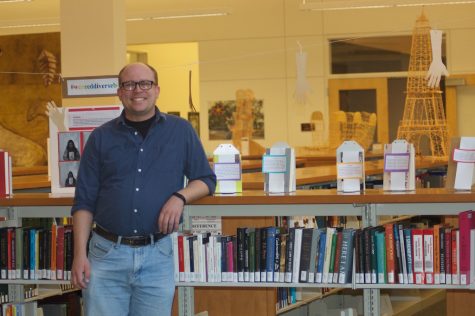Banned Books Week
October 4, 2016

Literary classics such as “Huckleberry Finn”, “The Catcher in the Rye”, “Fahrenheit 451”, “Where the Wild Things Are”, “Looking for Alaska”, and the Bible all have one thing in common: they have been banned.
Books become banned when certain groups or organizations lobby to have certain books banned from libraries due to sexual content and language among other things.
Linfield College and other institutions are calling attention to banned books by putting them on display during the last week of September.
The teaching and research librarian Patrick Wohlmut helped oversee the Banned Books week display at Linfield.
“This years theme is diversity. The American Library Association looked for books that had an author’s, viewpoint, or subject matter that involved diversity in some way,” said Wohlmut.
The banned books on display at Nicholson library range from The Perks of Being a Wallflower, to The Color Purple, to And Tango Makes Three, a children’s book that features same sex parents.
“That is one of the most visible examples of a book that exemplifies something that is very much a reality with families in America today” Wohlmut said.
The history of Banned Books is a long one. “Banned books week started back in 1982. It was started by a librarian who noticed an uptake in the number of challenged books that were being reported” In addition, there have been “over 11,000 challenged books since 1982” Wohlmut said.
Surprisingly, The Bible was one of the most challenged books of 2015 due to its “religious viewpoints which goes against expectations” Wohlmut said.
The display will be up until Oct. 9 so check out a banned book, grab a free button, and celebrate the freedom you have to read such “contraband.”
